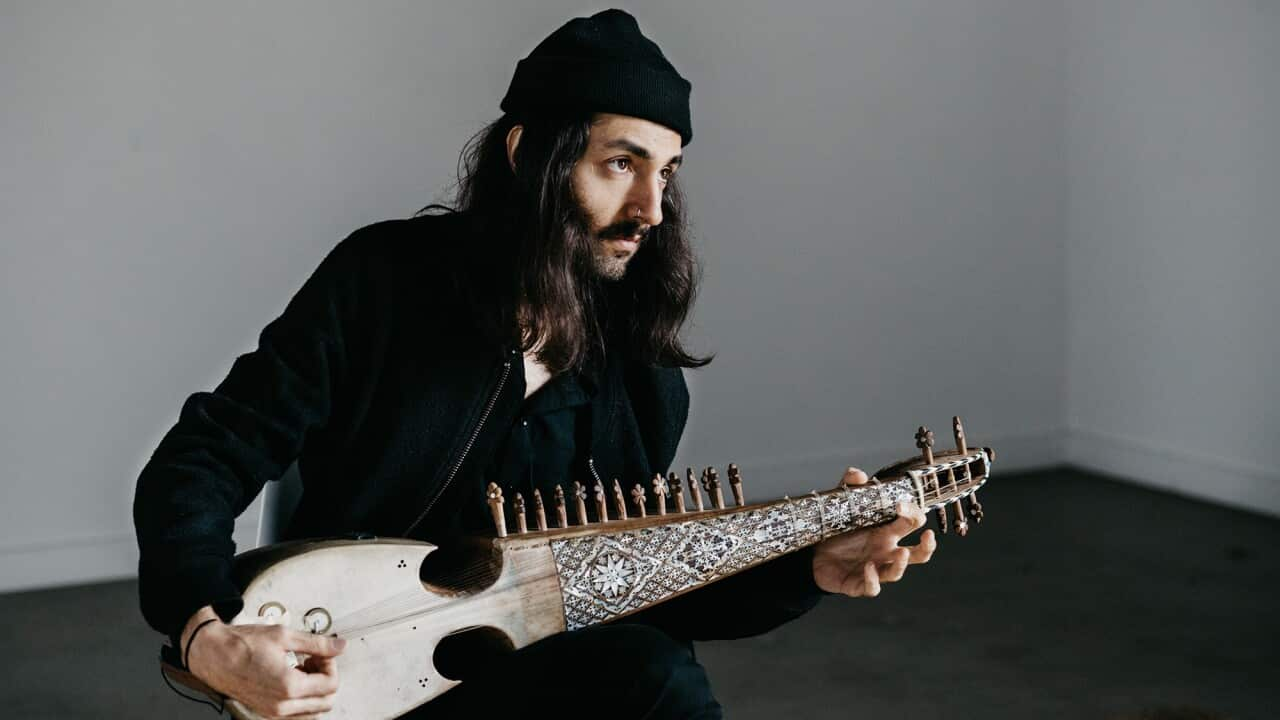There's no other figure that looms larger over the Liberal Party of Australia than Sir Robert Menzies.
In fact few Australians have gained such fame, or held such influence, over the nation than the former Liberal prime minister.
He created the party, was Australia's longest serving prime minister and is bound to be quoted or referred to by Liberal candidates during the federal election campaign. Robert Gordon Menzies was born in Jeparit in Victoria on 20 December 1894.
Robert Gordon Menzies was born in Jeparit in Victoria on 20 December 1894.

Sir Robert Gordon Menzies Source: SBS
He rose to be Australia's longest-serving prime minister, holding the position twice - from 1939 to 1941, and from 1949 to 1966 - a total of 18 years and five months.
War and White Australia
His first term as PM commenced in 1939 under the now extinct United Australia Party, as the threat of war was growing in Europe.
"Fellow Australians, it is my melancholy duty to inform you officially that as a consequence of the persistence by Germany in her invasion of Poland, Great Britain has declared war upon her and that as a result Australia is also at war," he told the Australian people.
He helped found the Liberal Party in 1944 and was a strong defender of the 1901 Immigration Restriction Act that came to be known as the 'White Australia Policy'.
"As long as we possibly can we ought to aim at having a homogeneous population," he said.
"I don't want to see reproduced in Australia the kind of problem they have in South Africa or in America or increasingly in Great Britain. I think it's been a very good policy and it's been a great value to us." Another major political figure, Malcolm Fraser, was Liberal leader and prime minister from 1975 until 1983.
Another major political figure, Malcolm Fraser, was Liberal leader and prime minister from 1975 until 1983.

مالکوم فریزر اندکی قبل از مرگش Source: AAP
He benefited directly from one of the country's most notorious political events.
As opposition leader he had blocked the passing of Labor Prime Minister Gough Whitlam's Budget bills through the Senate in October and November 1975.
That led to Governor General Sir John Kerr withdrawing Mr Whitlam's commission as prime minister on 11 November and installing Mr Fraser as interim prime minister.
Mr Fraser won by a huge majority.
Economically conservative but socially quite progressive, his government continued and extended Labor-initiated reforms such as the Family Court; it established the Special Broadcasting Service and declared parts of the Great Barrier Reef as a marine park.
John Howard's decade-long prime ministership

AUS PM John Howard wears a bulletproof vest in 1996. Source: Twitter
Prime minister from 1996 to 2007, John Howard brought in tough gun laws following the Port Arthur massacre, abolished the Aboriginal and Torres Straight Islander Commission and created Australia's offshore processing system for asylum seekers.
Mr Howard also committed Australia to the United States-led wars in Iraq and Afghanistan after the September 11 terrorist attacks.
The stability enjoyed in the Menzies and Howard eras was blown away in the years since Mr Howard lost the 2007 election to Kevin Rudd's Labor Party.
That election triggered a period in Australian political history of unstable leadership on both major sides of politics.
'Stop the boats, scrap the carbon tax'

تونی ابوت در حال تجلیل از پیروزی انتخابات با خانوادهاش Source: AAP
But Mr Abbott was deposed as party leader and prime minister, not at an election but in a leadership challenge by Malcolm Turnbull in September 2015.
Mr Turnbull, himself, lost the Liberal leadership and his job as prime minister after another leadership challenge in August 2018.
The challenge by Home Affairs Minister Peter Dutton led to two leadership spills.
Mr Turnbull won the first against Peter Dutton, but didn't stand in the second and Treasurer Scott Morrison defeated Mr Dutton to become the Liberals', and Australia's, third prime minister in less than two terms of government - the nation's seventh since 2007. It will be Mr Morrison who leads the coalition in this year's election campaign against the Labor party led by Bill Shorten.
It will be Mr Morrison who leads the coalition in this year's election campaign against the Labor party led by Bill Shorten.

مالکوم ترنبول، نخستوزیر پیشین و جانشینش، اسکات موریسن Source: AAP
Mr Morrison has placed a strong emphasis on reinforcing the image the Liberal Party cultivates for itself - being strong on national security, including on asylum seekers who arrive by boat, and being good managers of the economy.
Dr Zareh Ghazarian, senior lecturer in politics at Monash University, says the Liberal Party was created from a range of parties to represent people not aligned to the Labor Party and the trade union movement, such as business owners and salary-earners.
He says the party always has had elements of social conservatism and pragmatism, but in recent years the differences between its socially conservative elements and those who are progressive have reached new levels.
"This has ultimately resulted in leadership tensions," Dr Ghazarian said.
"It's resulted in a series of policy problems for the Liberal Party, but ultimately it reflects where the party started from and that is a 'broad church', as the party likes to say, a broad church of views and ideas, all represented within one party, whose goal it is to win elections and ultimately defeat the Labor Party."





